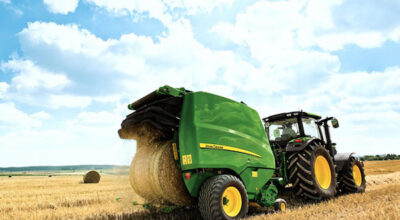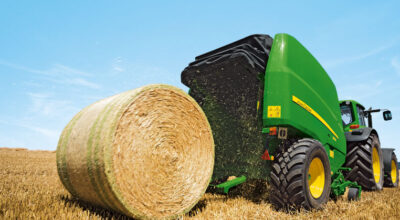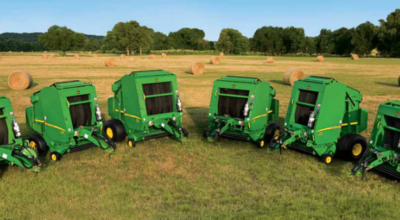Every once in a while, a new technology comes along that truly revolutionizes an industry and changes what people think is possible. This recently occurred in the agriculture industry, when John Deere introduced tractor baler automation.
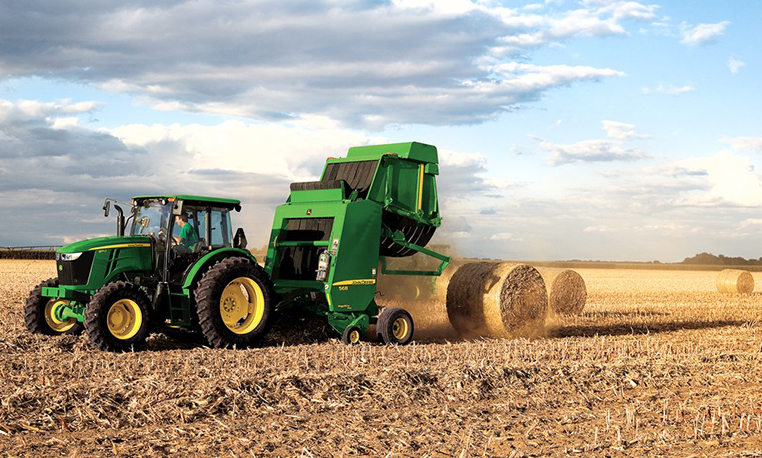
Why Tractor Baler Automation?
When designing the John Deere 9 series round balers, engineers were thinking and exploring many possible ways to improve the customer experience of using the product. Because customers are often baling for long periods of time, finding a way to reduce operator stress and fatigue while ensuring consistent bales can make all the difference. Tractor baler automation is one of the game-changing innovations that resulted from this fresh approach, allowing operators to bale with less stress and fatigue while delivering consistent bales.
How Does It Work?
So, how does this all work? Well, with a simple movement of the reverser or releasing of the breaks, the tractor will begin to move and drive forward. The operator will only need to watch and steer the machine. Once your bale has reached the appropriate size, the baler then tells the tractor to come to a controlled stop. After which, the baler will begin wrapping and then will send the command for the tractor hydraulics to extend the gate cylinders. When the gate position center has reached the maximum gate height and the bale is ejected, it sends the command for the tractor hydraulics to retract. After the gate has moved to the close position, both gate latches engage and send the tractor a message that it is ready to go. All that the operator has to do is cycle the reverser to resume baling.

What Does It Work With?
Tractor baler automation is exclusive to John Deere 9 series premium balers, making the baling process easier than ever before. In order to use the technology, owners will need a 9 series premium baler, a compatible late model John Deere tractor, and an ISOBUS monitor. With tractor baler automation in place, the tractor will be able to communicate to the baler for speed and tractor hydraulic commands.
Owners of tractors without an Infinitely Variable Transmission (IVT) can still get the benefits of the automatic bale ejection, but will have to start and stop the tractor manually. Despite this, tractor baler automation will still significantly reduce operator stress and provide consistency to each bale. The tractors that will work with automation are model years 2010 or newer, 6030 and 7030 premium, as well as the newer 6R and 7R tractors.
Tractor baler automation has been tested across Europe and North America in almost every field and crop condition, having made over 20,000 bales over throughout the test period. If you have been in the agriculture business for a long time, you will easily be able to notice the impact that a feature like tractor baler automation can have on the agriculture industry.
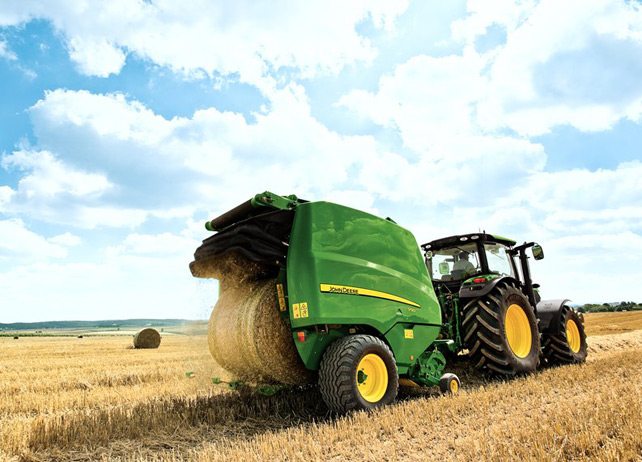
What Are the Benefits?
Oftentimes, even the most experienced operators feel like they need eyes in the back of their head because they have so many areas to look after. However, sensors are incorporated in the tractor baler automation system to do this for them. Imagine a day where your bales come out perfect every time, with faster and fewer steps required in each make. Hour after hour, day after day, each bale is the same size, same shape and same quality. Machine operating functions can be set automatically or manually, with just the push of a button, depending on what the operator prefers to make their day easier and more efficient. Overall, John Deere tractor baler automation increases productivity, quality, and comfort, while reducing waste of materials.
Hopefully this has enlightened your perspective on the future of hay farming, and the positive change that John Deere tractor baler automation has brought about in the agriculture industry. If you enjoyed this post or want to read others, feel free to connect with us on Facebook!
